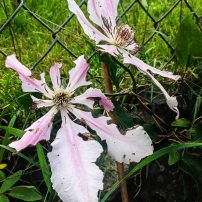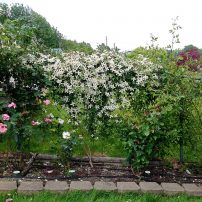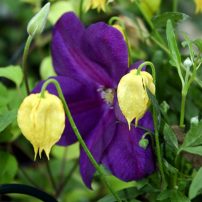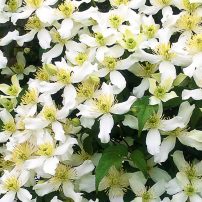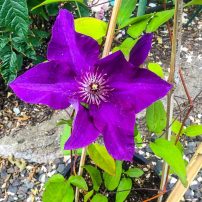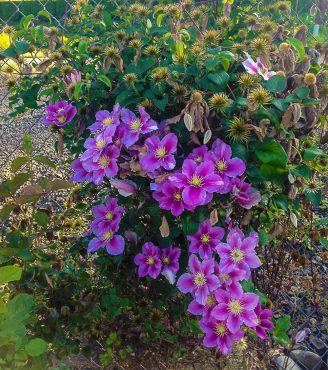
Do you have a problem structure in your garden? Perhaps there is an ugly shed or very functional fence calling for a color pop on your property? Clematis could be the answer to your design needs. They are available in many colors and heights.
This vine plant comes in over 100 readily available varieties, each at a very reasonable cost. Do not be frightened away from growing clematis because you do not understand the pruning requirements. It can be very easy for home gardeners.
The first two years, nothing but water and light fertilizer are required until the plant is established and growing vigorously. After a few years, in February, you will see some obviously dead and dry vines that need to be removed.
Some clematis grow from the ground up, which is typical of other perennials, and some bloom only on the previous year’s vine, so be observant and do not discard the name tag when you purchase the vine. It will be helpful during future years.
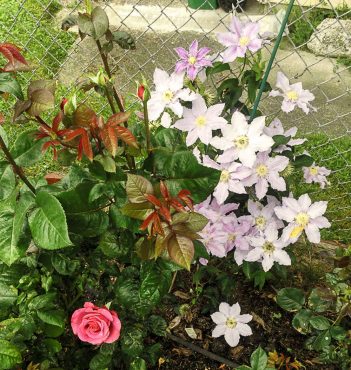
Beyond that, some deadheading then fertilizing will produce a second flush of blooms in the early-blooming varieties. If you forget to deadhead or choose not to do it, a very attractive seed head will form and some varieties will continue with a second flush among the seed heads.
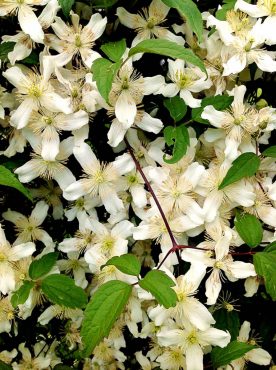
There is a general bit of clematis advise that says, “Clematis like their feet in the shade and their heads in the sun.” This can be achieved by planting clematis on a support with a medium-sized rose in front, both in a spot that will get at least six hours of sun.
You don’t want to encourage the vine to use the rose as a support because the additional foliage will stop airflow within the rose and the additional weight could break rose canes. Clematis grown this way will benefit from the fertilizer you give to your roses every spring.
The late, large-flowering group includes a rich variety of colors ranging from white, pink, red, blue and purple.
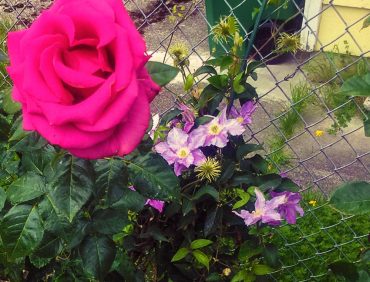 The small-flowered group includes some plants that can grow to 25 feet or more, depending on the location and care given. Evergreen climbers have glossy foliage that remains viable for several years and blooms reliably when given a fence as support. Clematis armandii ‘Snowdrift’ is true to its name when the late February and early March bloom is happening.
The small-flowered group includes some plants that can grow to 25 feet or more, depending on the location and care given. Evergreen climbers have glossy foliage that remains viable for several years and blooms reliably when given a fence as support. Clematis armandii ‘Snowdrift’ is true to its name when the late February and early March bloom is happening.
Some compact clematis, expected to grow to a mature height of less than 10 feet, can be successfully grown in containers larger than 14 inches, if given adequate support.
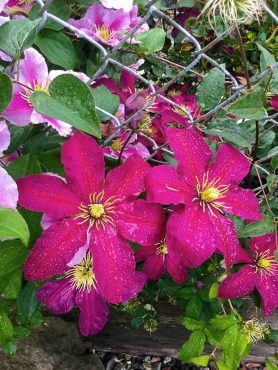
Uncomplicated Pruning
There are three distinct care groups of clematis. All need pruning at some point but not for the first year or two after planting. The more you observe the growth habit of your plants, the more intuitive this process will become.
Group 1 blooms in March and early April. Since they are the first to bloom, you can remember to trim them with deadheading after the blooming period. The Evergreen clematis, Montanas and the Arangene group become huge and heavy with age. They will flourish if you reduce them by half every few years, right after flowering.
Group 2 are the large flowering hybrids that bloom in early summer on sideshoots from the previous year’s growth. ‘The President’ is an old favorite in this category. It has been sold for decades and is readily available locally.
The main types are large-flowered and small-flowered clematis, with subtypes of early blooming (April-May) and late blooming (first blooms in mid-May to June).

The large-flowered group is what most gardeners think of when you say clematis. ‘Nelly Moser’ is a very familiar and very popular large-flowered clematis. Many large collections started with this one easy-care vine. The early-flowering types shine in soft and very desirable, light, spring colors, and are particularly attractive as a backdrop for later blooming plants, such as roses.
Group 3 should always be pruned hard, down to 12 inches, in late winter or early spring every year. They are extremely vigorous. One example is the Texensis group and some of the most hardy clematis that grow like true herbateous perennials, returning from their roots yearly.
Check the care tag attached to the newly purchased plant for more advice on pruning.




